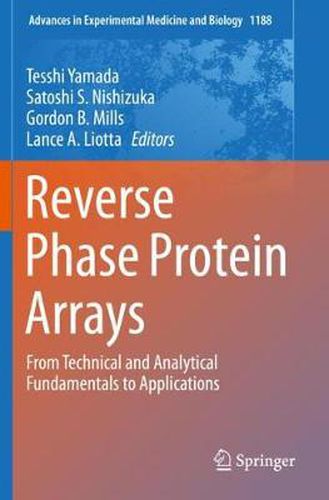Readings Newsletter
Become a Readings Member to make your shopping experience even easier.
Sign in or sign up for free!
You’re not far away from qualifying for FREE standard shipping within Australia
You’ve qualified for FREE standard shipping within Australia
The cart is loading…






This book provides practical guidance on all aspects of reverse phase protein array (RPPA) technology, which permits the quantification of protein levels in cell or tissue lysates. In addition, the latest results are presented from laboratories across the world where experts are successfully running the challenging RPPA data platform. After an introductory chapter by the inventor of the RPPA technique, the demanding task of lysate preparation is explained. Subsequent chapters review printing platforms and analytical platforms and discuss antibody screening in detail. The role of RPPA data in integrative analyses is thoroughly examined, and the various applications of RPPA, for example to identify molecular targeting drugs or evaluate cancer drug efficacy, are discussed with reference to the latest knowledge. It is hoped that the book will foster the implementation of RPPA by documenting the practical details of the technology and by revealing its great potential. It will be of high value for researchers who plan to build an RPPA platform in their institute and for researchers, clinicians, and companies who use RPPA through collaboration with an existing RPPA facility.
$9.00 standard shipping within Australia
FREE standard shipping within Australia for orders over $100.00
Express & International shipping calculated at checkout
This book provides practical guidance on all aspects of reverse phase protein array (RPPA) technology, which permits the quantification of protein levels in cell or tissue lysates. In addition, the latest results are presented from laboratories across the world where experts are successfully running the challenging RPPA data platform. After an introductory chapter by the inventor of the RPPA technique, the demanding task of lysate preparation is explained. Subsequent chapters review printing platforms and analytical platforms and discuss antibody screening in detail. The role of RPPA data in integrative analyses is thoroughly examined, and the various applications of RPPA, for example to identify molecular targeting drugs or evaluate cancer drug efficacy, are discussed with reference to the latest knowledge. It is hoped that the book will foster the implementation of RPPA by documenting the practical details of the technology and by revealing its great potential. It will be of high value for researchers who plan to build an RPPA platform in their institute and for researchers, clinicians, and companies who use RPPA through collaboration with an existing RPPA facility.